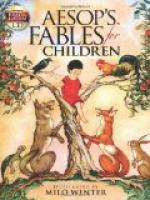|
This section contains 6,296 words (approx. 21 pages at 300 words per page) |

|
SOURCE: George Clark, "Henryson and Aesop: The Fable Transformed," in English Literary History, Vol. 43, No. 1, Spring, 1976, pp. 1-18.
In the following essay, Clark analyzes the significant differences between Robert Henryson's version and the more established version of Aesop's fables of "The Cock and the Jewel" and "The Swallow and the Other Birds."
Robert Henryson's Morall Fabillis of Esope the Phrygian have inspired his admirers to formulate radically differing explanations of the literary merit we recognize in these minor masterpieces. Older readings of these fables assumed that Henryson took up Aesop's plots but not his purposes, saw the excellence of the poems as the result of unAesopian "humor, realism, [and] compassion,"2 and usually viewed the Aesopian moralizations as vestigial remnants of an earlier evolutionary stage.3 Newer readings treat Henryson's Fables as emphatically Aesopian and moralizing and therefore good. One such critic writes that "The very intensity of Henryson's religious...
|
This section contains 6,296 words (approx. 21 pages at 300 words per page) |

|


